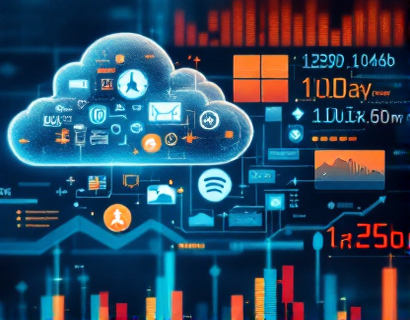AI and Crypto: Transforming Digital Productivity with Advanced Tech Solutions
The intersection of artificial intelligence (AI) and cryptocurrency is giving rise to a new era of digital productivity, where advanced tech solutions are redefining efficiency and task management. This fusion of technologies is not just a trend but a transformative shift that is set to revolutionize the way we work and interact with digital tools. As tech-savvy innovators and early adopters increasingly explore the potential of AI and cryptocurrency, the landscape is evolving rapidly, offering a plethora of opportunities for enhancing productivity and streamlining everyday tasks.
The integration of AI into cryptocurrency and blockchain technologies has opened up new avenues for innovation. AI algorithms can process vast amounts of data from blockchain networks, providing insights that were previously unattainable. This synergy is leading to the development of smart contracts that are not only self-executing but also capable of learning and adapting to changing conditions. Such smart contracts can automate complex business processes, reducing the need for intermediaries and significantly lowering transaction costs.
One of the key areas where AI and cryptocurrency are making a significant impact is in the realm of digital identity and security. Traditional methods of verifying identities and securing transactions are being replaced by more robust and efficient solutions. AI-driven biometric authentication combined with blockchain's immutable ledger ensures that user data is both secure and verifiable. This not only enhances user trust but also paves the way for more seamless and secure digital interactions.
Another critical aspect is the optimization of resource allocation and energy consumption. Blockchain networks, particularly those using proof-of-work consensus mechanisms, have been criticized for their high energy usage. AI can play a pivotal role in optimizing these networks by predicting and adjusting resource allocation in real-time. Machine learning models can analyze patterns and optimize the distribution of computational tasks, thereby reducing energy waste and making blockchain operations more sustainable.
The application of AI in cryptocurrency extends beyond just blockchain technology. AI-powered trading bots are becoming increasingly sophisticated, capable of analyzing market trends, predicting price movements, and executing trades with minimal human intervention. These bots leverage natural language processing (NLP) to interpret news articles, social media posts, and other textual data, providing a competitive edge in the fast-paced world of crypto trading. The combination of AI's analytical prowess and cryptocurrency's decentralized nature is creating a powerful tool for investors and traders alike.
In the context of digital productivity, AI and cryptocurrency are converging to create advanced work tools that enhance collaboration and task management. For instance, decentralized applications (dApps) built on blockchain platforms can facilitate peer-to-peer collaboration without the need for centralized servers. AI can enhance these dApps by providing intelligent recommendations, automating routine tasks, and ensuring that workflows are optimized for maximum efficiency. This not only improves productivity but also fosters a more inclusive and transparent work environment.
The development of decentralized autonomous organizations (DAOs) is another exciting frontier where AI and cryptocurrency intersect. DAOs are community-driven entities governed by smart contracts and AI algorithms. These organizations can make decisions based on data-driven insights, ensuring that resources are allocated effectively and transparently. AI can analyze member contributions, predict future trends, and suggest strategic actions, making DAOs a powerful tool for collaborative innovation.
For businesses looking to leverage these advancements, the integration of AI and cryptocurrency offers a competitive advantage. Companies can utilize AI-driven analytics to gain deeper insights into customer behavior and market dynamics, while leveraging cryptocurrency for secure and efficient transactions. This dual approach not only enhances operational efficiency but also aligns with the growing demand for transparency and security in business practices.
The potential for AI and cryptocurrency to transform digital productivity is vast, but it also comes with challenges. One of the primary concerns is the complexity of integrating these technologies into existing systems. Businesses need to invest in skilled personnel who can navigate the technical intricacies of AI and blockchain. Additionally, regulatory frameworks are still evolving, and companies must stay informed about compliance requirements to avoid legal pitfalls.
Despite these challenges, the benefits are undeniable. AI and cryptocurrency are not just tools but enablers of a new paradigm in digital productivity. They offer a level of automation, transparency, and security that traditional systems cannot match. As more organizations adopt these technologies, we can expect to see a significant shift in how work is done, with a greater emphasis on efficiency, collaboration, and innovation.
The future of digital productivity is being shaped by the synergy between AI and cryptocurrency. As these technologies continue to mature, we can anticipate even more groundbreaking applications that will further enhance our ability to work, collaborate, and achieve our goals. For those at the forefront of this revolution, the possibilities are endless, and the path ahead is both exciting and promising.




